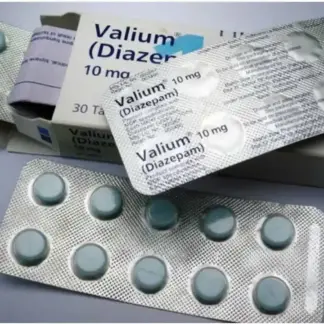
Chronic pain can significantly impact an individual’s quality of life, making effective pain management a crucial aspect of healthcare. Among the various treatment options available, tapentadol and tramadol have emerged as popular choices for long-term pain relief. While both are opioid analgesics, they possess distinct characteristics that set them apart. In this article, we will delve into the nuances of tapentadol vs tramadol, examining their mechanisms of action, analgesic effects, side effects, and clinical considerations.
Mechanisms of Action:
Tapentadol and tramadol belong to the opioid analgesics class but have unique mechanisms of action. Tapentadol is a dual mechanism of action analgesic, acting as a mu opioid receptor agonist and a noradrenaline reuptake inhibitor. This combination allows tapentadol to provide pain relief through opioid receptor agonism and modulation of descending pain pathways. On the other hand, tramadol is a centrally acting synthetic opioid analgesic that exhibits weak mu opioid receptor agonist activity and inhibits the reuptake of noradrenaline and serotonin.
Analgesic Effects and Pain Relief:
Both tapentadol and tramadol have demonstrated analgesic effects in the management of moderate to severe chronic pain. However, studies have shown that tapentadol may offer superior pain relief compared to tramadol. In clinical trials, tapentadol has been found to provide significantly higher pain control and improved functional outcomes compared to tramadol at equivalent doses.
Side Effects and Safety Profiles:
As with any opioid analgesic, tapentadol and tramadol carry the potential for side effects. Common side effects associated with tapentadol include nausea, constipation, dizziness, and somnolence. Tramadol, on the other hand, may cause side effects such as nausea, dizziness, constipation, and headaches. Additionally, tramadol has been associated with an increased risk of serotonin syndrome when combined with certain medications, such as selective serotonin reuptake inhibitors (SSRIs).
One key advantage of tapentadol over tramadol is its lower risk of certain adverse events related to the central nervous system (CNS). Due to its dual mechanisms of action, tapentadol may have a lower potential for CNS-related side effects compared to tramadol, which is a pure opioid receptor agonist and noradrenaline/serotonin reuptake inhibitor.
Abuse and Dependence Potential:
Both tapentadol and tramadol have the potential for abuse and dependence, as they are opioid analgesics. However, some studies suggest that tapentadol may have a lower risk of abuse and dependence compared to traditional opioid analgesics like oxycodone or hydrocodone. Tramadol, while generally considered safer than traditional opioids, still carries a risk of abuse and dependence, particularly at higher daily doses.
Patient Considerations:
When prescribing either tapentadol or tramadol, healthcare providers must carefully consider individual patient factors, such as age, comorbidities, and concomitant medications. Patients with a history of substance abuse or liver or kidney disease may require additional monitoring and precautions.
In addition, proper patient education on the appropriate use, storage, and disposal of these medications is crucial to mitigate the risks of misuse and diversion.
Tapentadol vs Tramadol: A Comparative Overview
To summarize the key differences between tapentadol and tramadol, here’s a table for quick reference:
| Characteristic | Tapentadol | Tramadol |
|---|---|---|
| Mechanism of Action | Mu-opioid agonist + noradrenaline reuptake inhibitor | Weak mu-opioid agonist + noradrenaline/serotonin reuptake inhibitor |
| Analgesic Effects | Potentially superior pain relief compared to tramadol | Effective for moderate to severe chronic pain like neuropathic pain |
| Side Effects | Nausea, constipation, dizziness, somnolence | Nausea, dizziness, constipation, headaches, risk of serotonin syndrome |
| Abuse and Dependence Potential | Potentially lower than traditional opioids | Higher risk, especially at high daily doses |
| Special Considerations | Lower risk of certain CNS adverse events | Caution with liver/kidney disease, substance abuse history |
| How To Order Online | Buy Tapentadol Online | Buy Tramadol Online |
This table provides a concise comparison of tapentadol and tramadol based on their mechanisms of action, analgesic effects, side effect profiles, abuse and dependence potential, and special considerations for healthcare providers.
Conclusion:
Tapentadol and tramadol are both valuable options for the management of moderate to severe chronic pain. While they share some similarities as opioid analgesics, their distinct mechanisms of action, analgesic effects, side effect profiles, and potential for abuse and dependence set them apart. Healthcare providers must carefully evaluate each patient’s specific needs and weigh the potential benefits and risks of these medications. By understanding the nuances of tapentadol vs tramadol, healthcare professionals can make informed decisions and provide personalized pain management strategies, ultimately improving patients’ quality of life.




